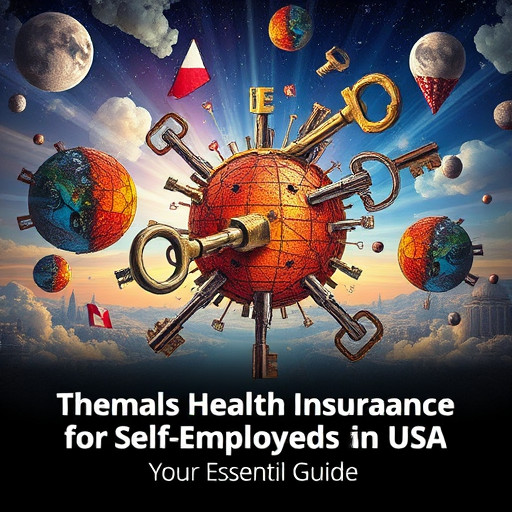Understanding Liability Coverage in Auto Insurance – A Comprehensive Guide to Protecting Your Financial Future

Understanding Liability Coverage in Auto Insurance is crucial for every vehicle owner. It serves as the financial safety net when you’re involved in an accident that causes harm to others or their property. In this article, we will delve deep into the intricacies of liability coverage, helping you grasp its significance and application within your auto insurance policy.
Who Should Understand Liability Coverage in Auto Insurance
The first step in navigating the complexities of auto insurance is recognizing who should be well-versed in Understanding Liability Coverage in Auto Insurance. This knowledge isn’t limited to just seasoned drivers or car owners; it’s essential for anyone who operates a motor vehicle, including new drivers, parents of teenage drivers, and even those considering renting a car.
Understanding the various aspects of liability coverage allows individuals to make informed decisions regarding their insurance needs. Whether you are exploring options for your personal vehicle or seeking to comprehensively cover a fleet of cars for your business, grasping the nuances of liability coverage is imperative.
New Drivers and Their Responsibilities
For new drivers, the road can be intimidating, filled with uncertainties and risks. They may not yet fully appreciate the importance of adequate insurance coverage. Here’s where understanding liability coverage becomes critical:
- Financial Responsibility: New drivers often do not realize that they could be held financially responsible for damages resulting from accidents. Learning about liability coverage prepares them for potential risks on the road.
- Protecting Against Lawsuits: Understanding how liability coverage works ensures that new drivers are aware of the legal implications of being at fault in an accident. The possibility of facing lawsuits after harming another person or damaging property is very real.
Parents Educating Young Drivers
Parents play a pivotal role in educating their children about responsible driving practices and the consequences of their actions. By discussing liability coverage, they can instill a sense of accountability in their young drivers.
- Setting Expectations: When parents explain liability insurance to their kids, they set clear expectations for responsible behavior while driving, emphasizing the importance of being insured adequately.
- Choosing the Right Policy: Parents can help guide their children in selecting policies that offer comprehensive liability coverage tailored to their needs. Engaging in discussions about premium costs versus coverage levels aids in fostering responsible decision-making.
Business Owners with Fleets
https://www.profitablecpmrate.com/dexuw7mhmv?key=6503b2f78ec4209747696c3d01ba1d23
Business owners who operate fleets have an additional layer of responsibility when it comes to understanding liability coverage. If one of their vehicles is involved in an accident, the repercussions can extend beyond individual drivers.
- Protecting Company Assets: Business owners must grasp the intricacies of liability coverage to safeguard their assets from potential claims arising from accidents involving their vehicles.
- Employee Training: Properly training employees on both safe driving practices and insurance responsibilities cultivates a culture of accountability within the organization.
How to Understand Liability Coverage in Auto Insurance
Knowing how to comprehend the different facets of liability coverage is a fundamental skill for managing your auto insurance efficiently. This section will elucidate the distinctions between various types of liability coverage and how they fit into a broader insurance framework.
Types of Liability Coverage
Liability coverage can be categorized mainly into bodily injury liability and property damage liability. Each has distinct applications and significance in auto insurance.
- Bodily Injury Liability: This coverage pertains to injuries sustained by other parties in an accident for which you are deemed at fault. It’s designed to cover medical expenses, lost wages, and pain and suffering of the injured party.
- Property Damage Liability: This type of coverage addresses the repair or replacement costs associated with damage to someone else’s property—be it their vehicle, fence, or home—resulting from your actions on the road.
Minimum Coverage Requirements
Different states impose varying minimum liability coverage limits. Being aware of these requirements is essential for compliance and financial protection.
- Understanding State Regulations: Researching local laws and consulting with insurance professionals can help you familiarize yourself with the mandatory coverage levels in your state.
- Evaluating Personal Needs: While meeting minimum requirements is essential, evaluating personal assets and potential risks can facilitate making informed decisions about increasing coverage limits.
Factors Influencing Coverage Costs
Several factors contribute to determining the cost of liability coverage, including age, driving history, type of vehicle, and geographic location.
- Driving History: A clean driving record typically results in lower premiums, while offenses such as DUIs or reckless driving can significantly inflate costs.
- Vehicle Type: The model and year of the car can also impact insurance rates. High-performance vehicles often attract higher premiums due to increased risk.
Pros and Cons of Understanding Liability Coverage in Auto Insurance
Like any financial product, liability coverage has its advantages and drawbacks. A balanced comprehension of these pros and cons can aid in making informed choices regarding auto insurance.
Advantages of Liability Coverage
Having sufficient liability coverage provides several benefits that enhance your overall financial security while driving.
- Legal Protection: In the event of an accident where you are at fault, having liability coverage shields you from financial liabilities arising from medical expenses or property damage claims.
- Peace of Mind: Knowing that you are protected against significant financial losses offers peace of mind, allowing you to focus on enjoying your time on the road without unnecessary anxiety.
Disadvantages of Liability Coverage
While liability coverage is vital, there are considerations to keep in mind that may present challenges.
- Limits on Coverage: One major drawback is that liability coverage only compensates for damages caused to others, leaving your own vehicle and medical expenses unprotected unless you opt for additional coverage.
- Cost Implications: Depending on the level of coverage selected, premiums can become costly. However, it’s important to weigh the cost against the potential risks and losses you might face.
Alternatives to Understanding Liability Coverage in Auto Insurance
While liability coverage is a primary component of auto insurance, there are alternatives and supplementary coverages available that can provide additional protection.
Collision Coverage
Collision coverage pays for damages to your vehicle resulting from a collision with another car or object, regardless of who is at fault.
- Importance of Collision Coverage: Especially relevant for newer vehicles or those with high value, this coverage ensures that repair or replacement costs do not fall solely on the driver.
- Choosing Collision Coverage Wisely: When considering collision coverage, assess the value of your vehicle and your ability to cover repairs out-of-pocket in case of an accident.
Comprehensive Coverage
Unlike collision coverage, comprehensive coverage protects against non-collision incidents such as theft, vandalism, or natural disasters.
- Holistic Protection: This type of coverage serves as a supplement to liability insurance, offering a more complete safety net for vehicle owners.
- Assessing Risk Levels: Evaluating environmental factors and the likelihood of theft in your area can help you determine whether comprehensive coverage is necessary.
Step-by-Step to Do Understanding Liability Coverage in Auto Insurance
Acquiring a thorough grasp of liability coverage necessitates a methodical approach. Follow these steps to ensure you have a robust understanding of how it applies to your auto insurance policy.
Step One: Research Local Regulations
Begin by investigating the state regulations pertaining to minimum liability coverage requirements.
- Consult Resources: Utilize government websites or insurance agencies to gather accurate information on state-mandated limits.
- Engage with Professionals: Consulting with an insurance agent can provide clarity on local laws and regulations.
Step Two: Assess Personal Needs
Evaluate your lifestyle, driving habits, and assets to determine the appropriate level of liability coverage for your situation.
- Consider Lifestyle Changes: Changes in life circumstances—such as marriage, purchasing a house, or having children—can influence your insurance needs.
- Review Coverage Limits Periodically: It’s wise to reevaluate your coverage limits regularly to ensure they align with your evolving situation and financial goals.
Step Three: Shop Around for Policies
Obtaining quotes from multiple insurance providers allows you to compare coverage options and find the best value.
- Consider Bundling Options: Many insurers offer discounts for bundling multiple policies, which can lead to substantial savings.
- Evaluate Customer Feedback: Investigate reviews and rating scores of various insurers to gauge customer satisfaction and reliability.
Tips for Understanding Liability Coverage in Auto Insurance
To maximize your understanding of liability coverage and its impact on your auto insurance policy, consider the following tips:
Keep Communication Open with Insurers
Maintaining open lines of communication with your insurance provider can help clarify any confusion regarding your policy.
- Ask Questions: Don’t hesitate to ask questions regarding your coverage limits, deductibles, or any changes you’re considering.
- Review Policies Annually: Schedule regular check-ins with your agent to discuss potential adjustments based on changes in your lifestyle or driving patterns.
Stay Informed About Industry Trends
The insurance industry evolves constantly, meaning staying updated on trends and changes can empower you.
- Follow Leading Publications: Subscribe to automotive and insurance publications that offer insights into emerging trends affecting coverage and rates.
- Participate in Workshops: Attend workshops or seminars focused on auto insurance to broaden your understanding and connect with knowledgeable professionals.
FAQs
What is liability coverage in auto insurance?
Liability coverage in auto insurance protects you if you cause harm to someone else or their property while driving. It covers medical expenses, property damage, and legal fees arising from accidents where you are at fault.
Is liability coverage mandatory?
Most states require drivers to carry a minimum amount of liability coverage. It’s essential to familiarize yourself with your state’s specific requirements to remain compliant.
How can I determine my ideal liability coverage limit?
Evaluating your assets, driving habits, and potential risk factors can help you determine your ideal coverage limit. Consulting with an insurance professional can provide valuable insights tailored to your situation.
Does liability coverage cover my own injuries or damages?
No, liability coverage does not cover your own injuries or damages to your vehicle. To protect yourself and your property, consider adding collision and comprehensive coverage to your auto insurance policy.
Can I lower my liability coverage limit to save on premiums?
While lowering your liability coverage limit may reduce your premiums, it can expose you to significant financial risks. Carefully assess your financial situation and potential liabilities before making any adjustments.
Conclusion
Understanding Liability Coverage in Auto Insurance is not just about fulfilling a legal requirement; it’s about safeguarding your financial future on the road. By familiarizing yourself with the nuances of liability coverage, you equip yourself with the knowledge needed to make informed decisions about your insurance policy. As you navigate through the complexities of auto insurance, remember to evaluate your individual needs, stay informed about industry changes, and maintain open communication with your insurer. Ultimately, taking these proactive steps can help ensure that you are well-prepared for any unforeseen events while driving.



Leave a Comment